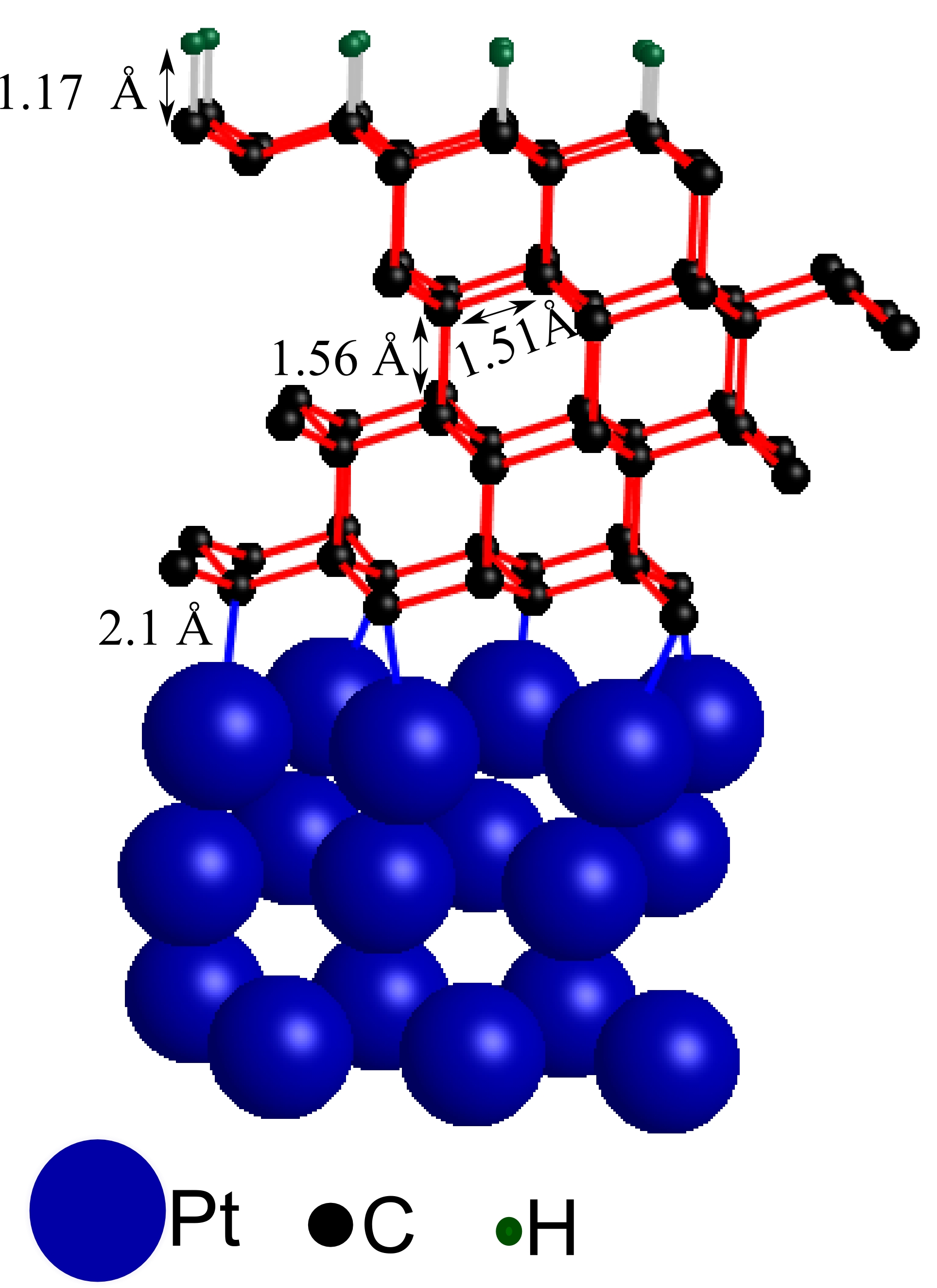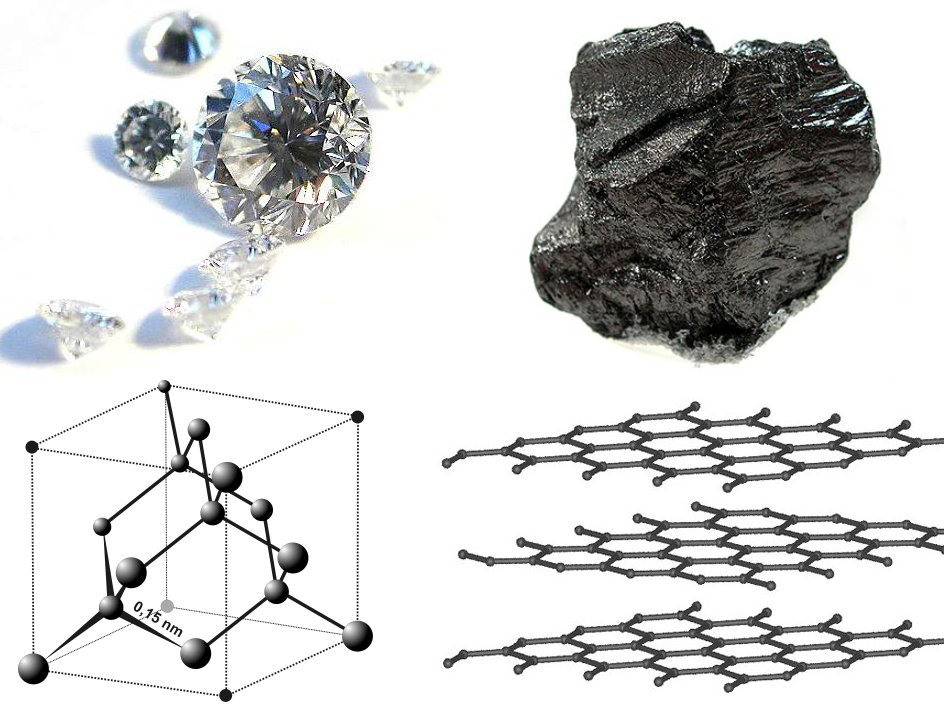How to instantly turn ‘pencil lead’ (graphite) into diamond
April 3, 2014

This illustration shows four layers of transformed graphene (single sheets of graphite, with carbon atoms represented as black spheres) on a platinum surface (blue spheres). The addition of hydrogen atoms (green spheres) to the top layer has set off a domino effect that transformed this graphite-like material into a diamond-like film. The film is stabilized by bonds between the platinum substrate and the bottom-most carbon layer. (Credit: Sarp Kaya and Frank Abild-Pedersen/SUNCAT)
Stanford University scientists have discovered by accident a way to produce thin diamond films from graphite, which could be useful for a variety of industrial applications, from cutting tools to electronic devices and electrochemical sensors.
The scientists added a few layers of graphene (one-atom thick sheets of graphite) to a platinum support and exposed the topmost layer to hydrogen.
The ‘Midas touch’?
To their surprise, the reaction at the surface triggered a domino effect that altered the structure of the graphene layers from graphite-like to diamond-like.
“We provide the first experimental evidence that hydrogenation can induce such a transition in graphene,” says Sarp Kaya, researcher at the SUNCAT Center for Interface Science and Catalysis.
Graphite and diamond are two forms of the same chemical element, carbon. In graphite, carbon atoms are arranged in planar sheets that can easily glide against each other. This structure makes the material very soft and it can be used in products such as pencil lead.
In diamond, on the other hand, the carbon atoms are strongly bonded in all directions; thus diamond is extremely hard. Besides mechanical strength, its extraordinary electrical, optical and chemical properties contribute to diamond’s great value for industrial applications.
Domino Effect
With the help of intense X-rays from SLAC ’s Stanford Synchrotron Radiation Lightsource and additional theoretical calculations performed by SUNCAT researcher Frank Abild-Pedersen, the team then determined how hydrogen impacted the layered structure.
They found that hydrogen binding initiated a domino effect, with structural changes propagating from the sample’s surface through all the carbon layers underneath, turning the initial graphite-like structure of planar carbon sheets into an arrangement of carbon atoms that resembles diamond.
The discovery was unexpected. The original goal of the experiment was to see if adding hydrogen could alter graphene’s properties in a way that would make it useable in transistors, the fundamental building block of electronic devices. Instead, the scientists discovered that hydrogen binding resulted in the formation of chemical bonds between graphene and the platinum substrate.
Future research will explore the full potential of hydrogenated few-layer graphene for applications in the material sciences.
The research team included scientists from Stanford University, the Stanford Institute for Materials & Energy Sciences (SIMES), SUNCAT, and SLAC’s Stanford Synchrotron Radiation Lightsource (SSRL) .
Abstract of Physical Review Letters paper
We report on the hydrogen adsorption induced phase transition of a few layer graphene (1 to 4 layers) to a diamondlike structure on Pt(111) based on core level x-ray spectroscopy, temperature programed desorption, infrared spectroscopy, and density functional theory total energy calculations. The surface adsorption of hydrogen induces a hybridization change of carbon from the sp2 to the sp3 bond symmetry, which propagates through the graphene layers, resulting in interlayer carbon bond formation. The structure is stabilized through the termination of interfacial sp3 carbon atoms by the substrate. The structural transformation occurs as a consequence of high adsorption energy.
